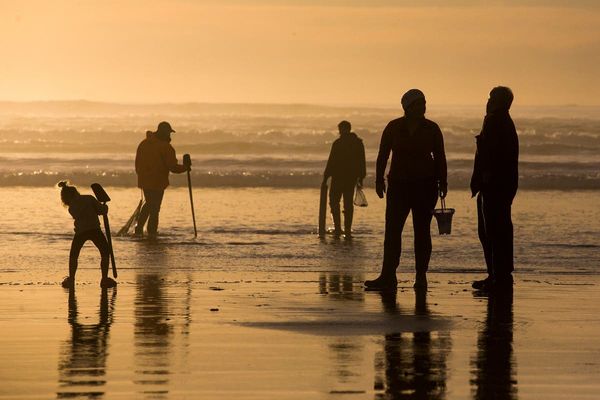
This shot was taken in Istanbul a year into my work on Hafiz, the photo series that would launch my career as a photographer. Between 2017 and 2021, I travelled across Turkey documenting the lives of young Muslim schoolgirls enrolled in religious Qur’anic schools and studying to obtain “hafiz” – an ancient rite of passage that requires the memorising of all 604 pages – or 6,236 verses, or 77,430 words – of the Holy Qur’an.
Hafiz, which translates as “guardian” or “memoriser”, is a custom following in the footsteps of the prophet Muhammad, who – between the 6th and 7th centuries, when most people in the Arabic world were illiterate – spread religious scripture by word of mouth. Still today, thousands of students study to memorise the holy book. From the age of 12, my twin sister and I began the process, too. Every day we woke at 5am with the morning call to prayer, before chanting lines alongside 600 classmates at Qur’anic school. In the afternoon we attended secular school. There were moments of freedom at home, when we watched TV, ate what we liked and were normal teenagers. But in those moments I found myself missing hafiz school, and in particular my classmates. They became my sisters, too.
And 20 years later, while creating the Hafiz series, the girls I met travelling across Turkey quickly became my best friends. They embraced me, knowing I am one of them. This photo is one of the most arresting in the series because of the unexpected contrasts: the black veils against the pink rollercoaster; a symbol of serious, religious observance next to a site of pleasure and youthful abandon. It deliberately undercuts the viewer’s expectations. For me, it was important to photograph the girls outside of their studies: at picnics or funfairs – moments of joy and recreation. For this shot, Seyma, Nehir and Sare became my creative collaborators. They patiently waited for me to capture the moment with the low-flying plane.
There are thousands of single-sex Qur’anic schools in Turkey alone, with the tradition mostly being upheld by girls. For those who follow the practices of the faith, a hafiz should be owed the highest respect by their community. It is forbidden to cross one’s legs or raise one’s voice in front of a hafiz – a rule that applies even to the men of any household. It is a rare example of when women and girls can have elevated status in certain Islamic countries.
Before becoming a photographer, I studied international trade and finance at the Istanbul Bilgi University. I wrote my thesis on Muslim women and the “subaltern” – a frequently used term in postcolonial thought for those designated as lower status in society. And as an extension of my academic work, my photography seeks to capture the hafiz schoolgirls in a nuanced and empowered light. I’m paying respect to the hafiz-in-training for their religious devotion and commitment. But as an artist and a woman, I’m also paying respect to all Muslim women. I wanted to counter the demeaning representations of Muslim women in visual culture, both in the east and the west. In film and TV, they often appear as secondary or servile characters – marginalised without a critical role or voice.
I want to show that these women and girls are not simply bound to the oppressive structures surrounding them. Beyond the school walls and their veils, their interior worlds and lived experiences are colourful, rich and rebellious. I’m honouring sisterhood and solidarity.
Since pursuing photography professionally, I have only worked on medium-format film, using a Hasselblad camera. I’m self-taught but have strived to learn everything I can about the medium. I choose not to work with digital cameras because it disturbs my creative process; I prefer a slower approach, with film that gives the texture I see in other art forms. In general I find myself more drawn to painting and poetry than photography: artists such as Andrew Wyeth, El Greco, Van Gogh, Caravaggio and Chagall.
Although I never completed schooling to be a hafiz, the experience is instilled in my artistic practice and outlook. I continue to wake at five every morning to pray, before beginning my work as an artist. The intensity of religious schooling gave me discipline and ignited my creative impulses: I escaped into my imagination, dreaming about the world beyond, or what the future might hold. Now, more than three decades later, my work is rooted in the past – a sense of nostalgia for this time of religious ritual, daydreaming and girlhood.
• Hafiz by Sabiha Çimen is at Kunsthal Rotterdam until 7 May.

Sabiha Çimen’s CV
Born: Istanbul, Turkey, 1986.
Trained: Self-taught.
Influences: “Painting, poetry.”
High point: “Winning the Paris Photo-Aperture first photobook award with Hafiz.”
Low point: “My lowest point is also my highest point – because it challenges me to make better work.”
Top tip: “Never compromise your photographic vision.”







